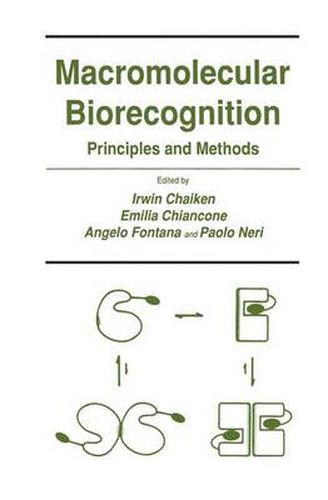Readings Newsletter
Become a Readings Member to make your shopping experience even easier.
Sign in or sign up for free!
You’re not far away from qualifying for FREE standard shipping within Australia
You’ve qualified for FREE standard shipping within Australia
The cart is loading…






This title is printed to order. This book may have been self-published. If so, we cannot guarantee the quality of the content. In the main most books will have gone through the editing process however some may not. We therefore suggest that you be aware of this before ordering this book. If in doubt check either the author or publisher’s details as we are unable to accept any returns unless they are faulty. Please contact us if you have any questions.
Specific biomolecular interactions occur in practically every bio- logical process, usually involving macromolecules such as proteins and nucleic acids. Thus, it is not surprising that great attention has been devoted by biologists, chemists, and physical chemists to the general phenomenon of macromolecular recognition in order to gain a better understanding of the principles, forces, and energetics that de- termine the often remarkable specificities of such interactions as those of enzymes and their substrates and inhibitors, antibodies with anti- gens, hormones with their receptors, and DNA with drugs. These studies have allowed the unraveling of some basic principles of mol- ecular recognition, such as complementarity, specificity, and dynam- ics of the interacting species, and at the same time have led to development of analytical and separation techniques based on bio- logical specificity (e. g. , affinity chromatography and other bioaffinity methods). This volume was assembled to address current research and developing ideas in biomolecular recognition through the contribu- tions presented at the Conference on Mechanisms of Recognition in Biological Macromolecules held in Siena, Italy, September 4-6,1986. The Conference was cosponsored by the National Research Council of Italy, the Italian Biochemical Society, the University of Siena, and the International Interest Group in Biorecognition Technology.
$9.00 standard shipping within Australia
FREE standard shipping within Australia for orders over $100.00
Express & International shipping calculated at checkout
This title is printed to order. This book may have been self-published. If so, we cannot guarantee the quality of the content. In the main most books will have gone through the editing process however some may not. We therefore suggest that you be aware of this before ordering this book. If in doubt check either the author or publisher’s details as we are unable to accept any returns unless they are faulty. Please contact us if you have any questions.
Specific biomolecular interactions occur in practically every bio- logical process, usually involving macromolecules such as proteins and nucleic acids. Thus, it is not surprising that great attention has been devoted by biologists, chemists, and physical chemists to the general phenomenon of macromolecular recognition in order to gain a better understanding of the principles, forces, and energetics that de- termine the often remarkable specificities of such interactions as those of enzymes and their substrates and inhibitors, antibodies with anti- gens, hormones with their receptors, and DNA with drugs. These studies have allowed the unraveling of some basic principles of mol- ecular recognition, such as complementarity, specificity, and dynam- ics of the interacting species, and at the same time have led to development of analytical and separation techniques based on bio- logical specificity (e. g. , affinity chromatography and other bioaffinity methods). This volume was assembled to address current research and developing ideas in biomolecular recognition through the contribu- tions presented at the Conference on Mechanisms of Recognition in Biological Macromolecules held in Siena, Italy, September 4-6,1986. The Conference was cosponsored by the National Research Council of Italy, the Italian Biochemical Society, the University of Siena, and the International Interest Group in Biorecognition Technology.